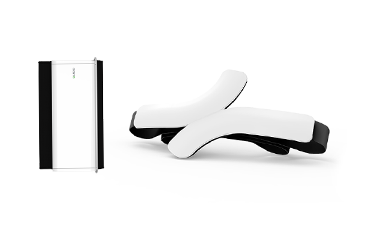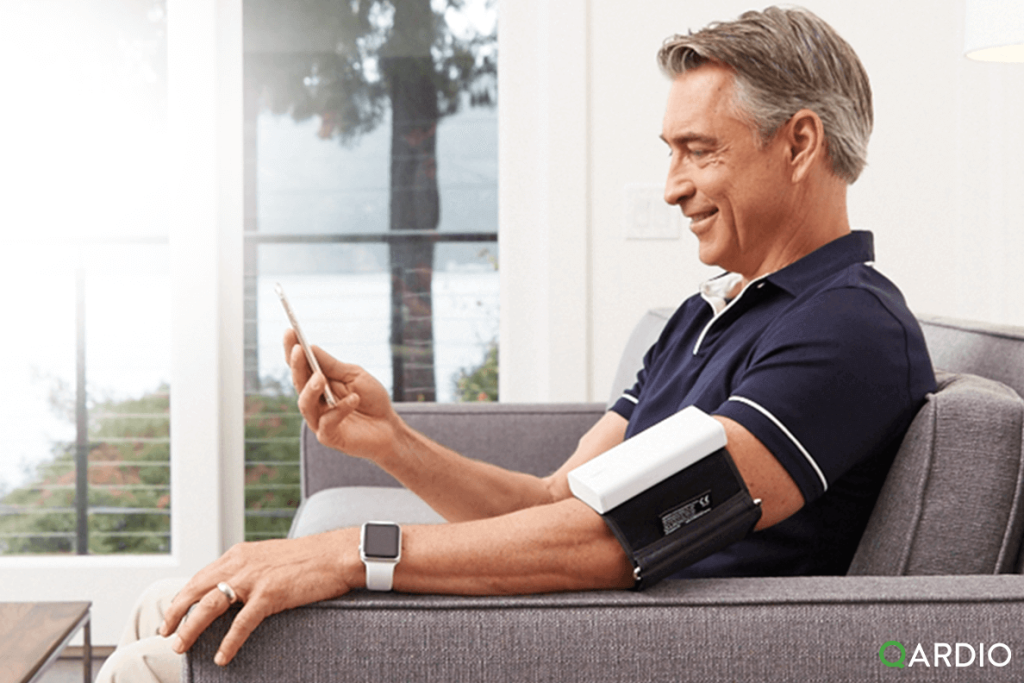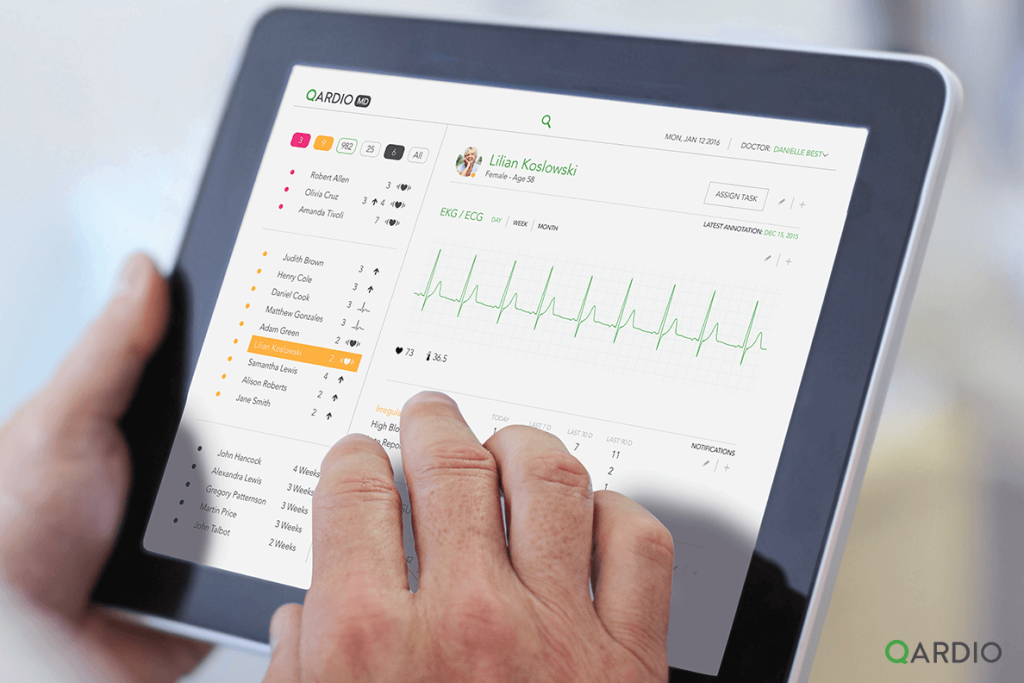Heart problems are extremely common in today’s society. According to a study done by the Centers for Disease Control and Prevention, 28.4 million Americans have some form of heart disease, including the heart condition atrial fibrillation. Knowing the signs, symptoms, and treatment of these diseases could possibly save your life.
What is the definition of atrial fibrillation?
Atrial fibrillation, also known as AF or AFib, is an irregular and often rapid heart rate that can lead to heart-related complications. It is one of the most common types of heart arrhythmia (an abnormality in the rate or rhythm of the heartbeat.)
What happens during atrial fibrillation?
Atrial fibrillation causes the upper chambers of the heart (the atria) to beat irregularly, instead of beating effectively, to move blood into the ventricles. Typically, the heart relaxes and contracts to a routine beat. However, in AFib, the heart’s chambers do not work together as they should and contract very quickly and irregularly.
What causes atrial fibrillation?
Atrial fibrillation is usually caused by damage to the heart. Some people develop the condition due to high blood pressure, heart attacks, overactive thyroid glands, or previous heart surgeries. However, others are born with abnormalities that cause AFib. Other possible causes include exposure to stimulants, such as medications, caffeine, tobacco or alcohol, sick sinus syndrome (improper functioning of the heart’s natural pacemaker), lung diseases, sleep apnea and coronary artery disease.
AFib may begin as a less severe heart arrhythmia called atrial flutter. In atrial flutter, the rhythm in the heart is more organized and less disorderly than the abnormal rhythms common with atrial fibrillation. Sometimes people may have atrial flutter that develops into atrial fibrillation.
If you want to read more about heart attacks, check our article ”Heart attack: causes, symptoms, treatment and prevention”
What are the symptoms of atrial fibrillation?
Many people report a “fluttering” or “thumping” feeling in their chest when experiencing atrial fibrillation. Other symptoms include fatigue, dizziness, and shortness of breath. However, some people with atrial fibrillation have no symptoms and are unaware of their condition until their doctor discovers it.
How is atrial fibrillation detected?
The easiest way to start is by monitoring blood pressure. Keeping a journal of the patients blood pressure readings will allow them to see if there are recurring irregularities. QardioArm blood pressure monitor detects and records each irregular heart beat occurrence along with numbers.
Next, a doctor will order a few tests, specifically, a test called an electrocardiogram (ECG or EKG) that records the heart’s electrical activity. Because AFib occurs sporadically, it is hard for the doctor to detect it in one visit. For this reason, many physicians use Holter monitors to detect the irregular heartbeats. A Holter monitor records your heart’s activity for at least 24 hours, which allows the doctor to see the heart rhythms.
Most ECG recorders and Holter monitors are very inconvenient, requiring intrusive skin preparation and a professional fitting in the doctor’s office. For this reason, Qardio designed the world’s first ECG/EKG monitor that doesn’t require wires and patches, can be used at home and is gentle to the skin — QardioCore. This smart ECG/EKG monitor can be worn at any time comfortably under clothes and sinks to an iPhone or iPad.
Check our guide ‘‘How does ECG/EKG work and what is an ECG/EKG monitor?” to discover more.
Who is at risk for developing atrial fibrillation?
The largest risk factor of AFib is age. While those over the age of 60 are more likely to develop atrial fibrillation, any person, ranging from children to adults, can develop AFib. High blood pressure and heart disease also increase risks of being diagnosed. Having a family history of atrial fibrillation can increase a persons chances of developing the disorder as well.
How is atrial fibrillation treated?
Each case of atrial fibrillation is different. Therefore, treatment may be different for each patient. The severity and length of the atrial fibrillation will determine the best option. One way that AFib is treated is by catheter ablation, a nonsurgical procedure. Ablation is used for cardiac arrhythmias when medications are not effective. Catheter ablation uses radiofrequency to destroy a small area of heart tissue that is causing irregular and fast beats. This helps to reset the heart to a normal rhythm.
How to prevent atrial fibrillation?
Living a heart-healthy lifestyle is the best way to reduce risk of AFib. Controlling blood pressure is a great start to living a heart-conscious way of life. Control BP by eating foods high in fiber, magnesium, and potassium. Try to avoid foods high in salt, cholesterol, and saturated fat.
Managing stress is another great way to reduce risk of AFib. High-stress levels for an extended period of time can lead to hypertension and chronic high blood pressure — both possible causes for AFib. For this reason, it is crucial to manage stress to take care of the heart. Exercise, meditation, and yoga are all great ways to manage stress.
Avoiding excessive amounts of alcohol, caffeine, and tobacco could also help reduce a patient’s risk of atrial fibrillation. These stimulants cause the adrenal gland to pump out adrenaline. This pump of adrenaline on an electrically sensitive area of the heart can cause AFib. Avoiding these stimulants will help keep the circulatory system in the best condition.
To learn more about hypertension, check our article ‘‘What does hypertension mean?”
Is there medication for atrial fibrillation?
If a person has atrial fibrillation, the doctor may prescribe blood-thinning medications (anticoagulants), to prevent blood clots, which often lead to strokes. Additional medication may be prescribed to control heart rate and rhythm. The longer a person has untreated AFib, the harder it is to reestablish normal heart rhythm.
Discover how easy it is to learn about your heart health! Use QardioArm, a smart blood pressure monitor to keep your blood pressure in optimal levels and QardioCore portable ECG/EKG monitor to detect and manage most heart conditions, including atrial fibrillation.
Post contributed by Natalie Cassidy.
Sources:
WebMD
Mayo Clinic
John Hopkins Medicine
American Heart Association 1
American Heart Association 2
American Heart Association 3
Centers for Disease Control and Prevention




